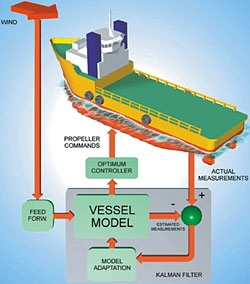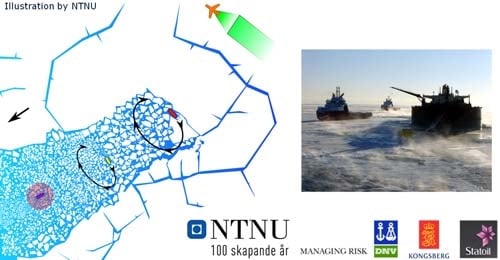The group, which is currently recruiting new members, will mainly consist of PhD-level professionals in the field of engineering cybernetics. "These efforts are especially important in today's complex society where increasingly higher qualifications are needed in order to distinguish oneself as world class," explains head of the group, Morten Breivik.
Breivik has a PhD degree in marine cybernetics and previous experience as a researcher and lecturer at the Norwegian University of Science and Technology's Department of Engineering Cybernetics, Department of Marine Technology and Centre for Ships and Ocean Structures.
Core competence for Kongsberg Maritime
As an interdisciplinary field established during the Second World War, cybernetics takes its name from the Greek word 'kybernetes', meaning 'steersman'. This term was originally coined by the American mathematician Norbert Wiener in his book 'Cybernetics: Or Control and Communication in the Animal and the Machine', published in 1948.

Historically, cybernetics has always been a core competence for Kongsberg Maritime. It started with sophisticated ship automation solutions from Norcontrol in the 1960s and continued with dynamic positioning from KV Albatross in the 1970s. Today Kongsberg Maritime is the custodian of this proud heritage, furthering it into a maritime world which is facing fundamental changes to operational concepts and manning solutions in the future.

"In the technical sense, cybernetics is about how dynamic systems such as ships, robots and chemical processes behave and how to control such systems automatically. Therefore, engineering cybernetics involves many disciplines including control engineering, systems theory, information technology, mathematics, physics, modelling for e.g. aerodynamics, hydrodynamics and chemical engineering, signal processing, image processing, instrumentation and navigation," says Breivik.
"Most central to cybernetics, however, is control engineering and systems theory. These sub-disciplines deal with basic cybernetic principles that cut across specific application areas and can be used for all types of systems. The other sub-disciplines then serve to support specific technology solutions based on these fundamental principles," adds Breivik.
Increasingly important for the modern society
Technological systems based on cybernetic theories and methods are becoming increasingly important for the modern society, being implemented in a rapidly growing number of products.
"Today, cybernetic solutions are used in everything from thermostatically-controlled heaters via GPS-guided tractors and chemical process plants to unmanned aircraft and submarines. For an increasing amount of companies, cybernetics represents a core competence which it is not possible to do without. This is particularly true for Kongsberg Maritime, which specializes in developing advanced control and automation products for the maritime industry. To be world-leading within its product areas, the company must therefore also possess world-leading cybernetics expertise," comments Breivik.

The cybernetics group will focus on developing solutions for both manned and unmanned vessels. For example, automated marine operations where humans only play a general supervisory role will become increasingly important, especially in connection with activities in the Arctic. As a result, the group already participates in a research project together with NTNU, Statoil and DNV called 'Arctic DP: Safe and Green Dynamic Positioning Operations of Offshore Vessels in an Arctic Environment'.
"In short, the group will contribute to research-based and market-oriented innovation so that Kongsberg Maritime retains and further develops its position as a world leader in maritime technology based on cybernetic theory and methods," continues Breivik.
"This initiative represents a unique opportunity for ambitious cybernetics professionals to gather in a leading professional community to work with exciting and challenging R&D problems in applied maritime cybernetics, and to be able to follow their solutions all the way from newly hatched ideas into finished market products. Our ultimate goal is to be able to develop products that meet needs the market has not even thought about in advance," says Breivik.